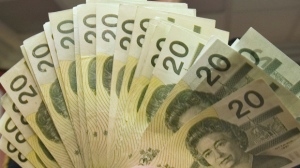
Toronto, Ontario’s minimum wage will rise to $11.25 an hour starting Oct. 1, making it the second-highest rate in the country after the Northwest Territories.
The Liberal government enacted legislation in the fall that tied minimum wage to inflation, so every year the new rate will be announced by April 1 to take effect that October.
While the general minimum wage increases from the current $11, the minimum wage for students increases to $10.55 and for liquor servers it rises to $9.80.
The Ministry of Labour says this is the ninth minimum wage increase since the Liberals took power in 2003.
The Northwest Territories’ minimum wage will be increased to $12.50 in June, making it the highest rate in the country.
British Columbia also announced an increase in its minimum wage last week, a rise of 20 cents in September to $10.45 as a result of indexing to B.C.’s consumer price index.
Here’s a list of minimum wages in Canada:
British Columbia: Currently $10.25 for most workers and $9 for those serving alcohol; increasing to $10.45 and $9.20,respectively, in September
Alberta: $10.20 or $9.20 for workers who serve alcohol
Saskatchewan: $10.20
Manitoba: $10.70
Ontario: Currently $11; $10.30 for students under 18 and $9.55 for workers serving alcohol; increases to $11.25, $10.55 and $9.80, respectively, in October
Quebec: $10.35 or $8.90 for workers who receive tips; increasing to $10.55 and $9.05, respectively, in May
New Brunswick: $10.30
Nova Scotia: $10.40 an hour for most workers and $9.90 for”inexperienced” workers; increasing to $10.60 and $10.10, respectively, in April
Prince Edward Island: $10.35, increasing to $10.50 in July
Newfoundland and Labrador: $10.25, increasing to $10.50 in October
Yukon: $10.72, increasing to $10.86 in April
Northwest Territories: $10, increasing to $12.50 in June
Nunavut: $11




 Driving Naari Programme launched in Chandigarh
Driving Naari Programme launched in Chandigarh






























